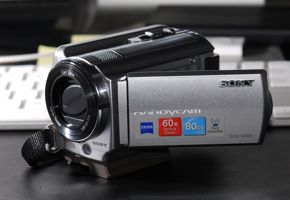1. Collecting birds: In the 19th century the equipment needed to study birds was the gun. Another skill necessary was a good stuffing technique in order to preserve the specimens. And so, armed with a gun and accompanied by a “bird boy” to fetch the dead bird, collectors amassed large collections of previously undescribed species. Their obsession was in systematics and nomenclature. These collectors had generally lost sight of birds as biological entities.
2. Collecting bird sightings: By mid-20th century, collecting dead birds was frowned upon. A new generation of collectors emerged. These were the collectors of live bird sightings, to be subsequently termed twitchers. Their interest in birds was in the accumulation of species. The required tool: a pair of binoculars, a checklist to tick off species seen and a pocket-sized guide book. These collectors are still around, enjoying birdwatching as a healthy outdoor activity. Their obsession? Listing of habitats and countries, year list and life list… Their contribution? Information of bird sightings and sometimes, bird behaviour.
3. Collecting images of birds: The early 21st century saw a revolution in camera technology and digital photography became popular. The interest of this new breed of collectors is bird portraits. The necessary tool is a digital camera body fitted with a high-powered lens of up to 600 mm capability. A top of the range tripod is deemed essential. Their obsession? Bird images of the highest quality in terms of composition, lighting and resolution. In chasing portrait shots, photographers have the opportunity to document behavioural traits at the same time. And so, besides contributing to sightings, they also bring in information on bird behaviour. An advantage of images is that you can examine in detail well after the event, especially details of morphology, identification of food taken and most important of all, identification of rarities and difficult species, which is not possible without photographs.
4. Collecting video clips of birds: Parallel with the fast development of camera technology is the development of the video camera. We now have video cameras that are light as compared to cameras mounted with 300-600 mm lens and with the capability of recording under low light conditions. Another advantage is the incorporation of audio equipment to record bird calls and songs. Unless there is a need for high definition images for print publications, videos are proving useful, especially in behavioural studies.
For example, the video clip by KC Tsang of the juvenile Buffy Fish Owl (Ketupa ketupu) roosting on its perch (above), provides enough details to make a posting on its eye movements, showing a combination of opening, closing and movements of the nictitating membrane. These details were obtained in the comfort of the home after the video was uploaded into the computer. With camera images, details can be seen but movements are lacking. However, when viewed through the binoculars, such details are often not observed. This is one reason why there was no mention of nictitating membrane by binoculars-toting local birdwatchers in the past. And a vidoegrapher will one day document anting in birds that has so far evaded photographers.
For the records, KC uses a Sony Handycam DCR SR68E (left). His requirements are that it has got to be cheap and of the latest model. This videocam has standard definition, not high definition which would cost about three times or more. This Handycam is quite small and light, with a 60x optical, and a 2000x digital zoom, a great feature for birds that are very shy and hard to get close. However the image quality will never be half as good as those by a still camera.
Prof Ng Soon Chye is the first among local birders to use video camera to document bird behaviour. His classic 26 clips on 11 species of hornbills taken at various national parks in southern Thailand in the 2000s are available for viewing at The Internet Bird Collection.
On the international scene, there are numerous birdwatchers documenting birds with videocams – check it out at this LINK. Obviously the video camera has proved to be a powerful tool for studying birds. The camera has an important role too. And so has the binoculars, which is a useful tool for recreational birdwatchers.
YC Wee
Singapore
July 2010










7 Responses
I would like to add that people are making film and video using DSLR now, esp Canon 5D MkII with HD video capability. It is an advantage because one can have very good quality video with so many lens option.
So you guys with this camera, do take note and have fun.
Here is just one of many sites to help you:
http://www.5dfilmmaking.com/
Happy recording!
Thanks for the update, Daniel.